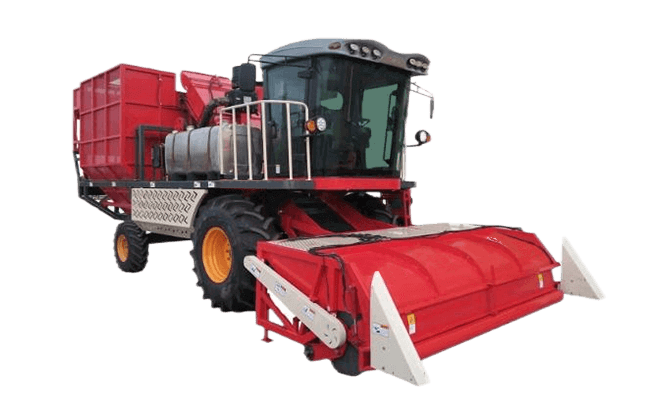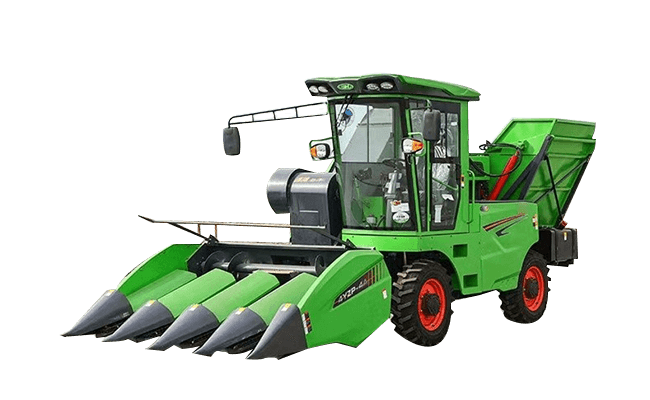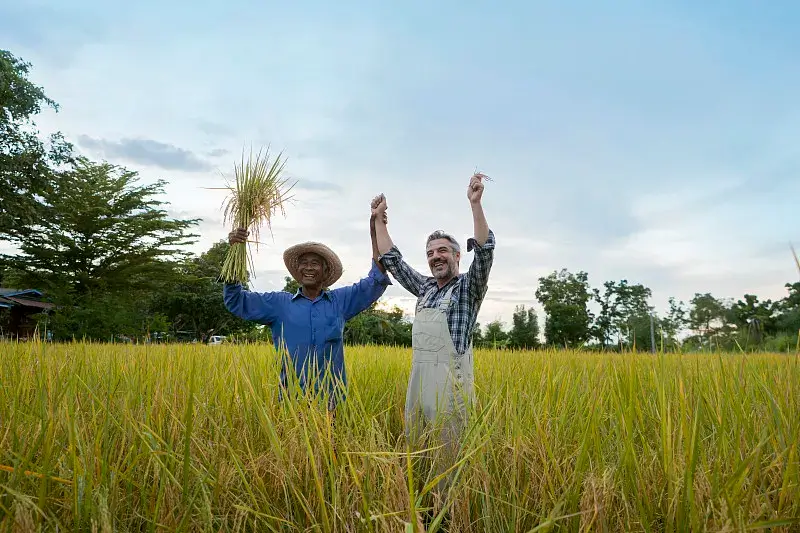Harvest season is a pivotal time in the agricultural calendar, marking the culmination of months of hard work, planning, and nurturing. For farmers and farm owners, it represents not only the gathering of crops but also the period that determines the financial viability of their year’s efforts. It’s a time when the success or failure of the planting season is measured, and the results of careful land management and crop care are realized.
Harvest season is the period when crops are gathered from the fields. It varies by crop type and location and is crucial for farmers’ income and food security. This season involves key stages from crop growth to collection. Modern technology and sustainable practices are improving efficiency and handling challenges during this critical time. Understanding harvest season helps ensure a successful crop yield.
This knowledge is also crucial for those looking to enter the agricultural sector, whether as producers or consumers of agricultural products. This article explores the various aspects of harvest season, from its timing and significance to the challenges faced by farmers and the role of technology in modern harvesting practices.
Contents
- 1 What is Harvest Season?
- 2 Common Crop Harvest Times
- 3 The Agricultural Calendar: Understanding Crop Cycles
- 4 Importance of Harvest Season for Farmers
- 5 Agricultural Machinery and Harvesting Techniques
- 6 Harvest Season Challenges and Solutions
- 7 The Economic and Environmental Impact of Harvest Season
- 8 The Future of Harvesting and Agricultural Machinery
- 9 Conclusion
- 10 Call to Action
What is Harvest Season?
Harvest season is the period when mature crops are gathered from the fields. The timing of this season varies depending on the type of crop, geographic location, and local climate conditions. Generally, harvest season occurs after the crops have reached their peak maturity and are ready to be collected, processed, and sold or stored.
Traditionally, the harvest season has been a time of great significance in agricultural societies, often celebrated with festivals and communal activities. The importance of this season cannot be overstated, as it directly impacts food security, economic stability, and the overall livelihood of farming communities.
For many crops, such as wheat, corn, and soybeans, the harvest season typically falls in late summer to early autumn. However, the timing can differ widely based on the specific crop and regional climate conditions. For example, in tropical regions, certain crops can be harvested multiple times a year, while in temperate zones, the harvest may be confined to a specific period.
Common Crop Harvest Times
Knowing when crops are typically harvested is important for farmers, agricultural professionals, and anyone involved in the agricultural supply chain. Different crops mature at different times, depending on their growth cycle and the climate in your area. Below is a detailed table that shows when some of the most common crops—wheat, corn, rice, soybeans, potatoes, and cotton—are typically harvested in key agricultural regions. This information is important for planning and managing resources during the busy harvest season.
| Crop | Region | Harvest Time |
| Wheat | North America (U.S., Canada) | June – August |
| Europe (France, Germany) | July – August | |
| Asia (India, Northern China) | March – May (Winter Wheat), May – July (Spring Wheat) | |
| Corn | North America (U.S. Midwest) | September – November |
| South America (Brazil, Argentina) | February – April | |
| Asia (China, India) | September – November | |
| Rice | East Asia (Southern China, Japan) | September – October |
| Southeast Asia (Thailand, Vietnam) | November – January | |
| South Asia (India, Bangladesh) | November – December | |
| Soybeans | North America (U.S.) | September – November |
| South America (Brazil, Argentina) | March – May | |
| Asia (China) | September – October | |
| Potatoes | North America (U.S., Canada) | August – October |
| Europe (Germany, Netherlands) | August – September | |
| Asia (China) | July – September | |
| Cotton | North America (Southern U.S.) | September – November |
| South Asia (India, Pakistan) | October – December | |
| Africa (Egypt) | September – October |

The Agricultural Calendar: Understanding Crop Cycles
The agricultural calendar is a crucial tool for farmers. It provides a structured timeline for planting, growing, and harvesting crops. Understanding the crop cycle is essential for maximizing yield and ensuring that crops are harvested at the optimal time.
Stages of Crop Growth:
- Germination: The process begins with seed germination, where the seeds sprout and start developing into plants.
- Vegetative Stage: During this phase, the plant focuses on growing leaves, stems, and roots. Proper care during this stage is critical for strong, healthy plants.
- Flowering and Pollination: Plants enter the reproductive stage, where flowers bloom and pollination occurs. This is a crucial period for crop yield potential.
- Fruiting and Maturation: After pollination, fruits or seeds develop and mature. This stage is critical for determining the quality and quantity of the harvest.
- Harvesting: Finally, the crops are ready to be harvested once they have reached full maturity.
Different crops have unique growth cycles and harvest times. For example, wheat typically takes about 120 days from planting to harvest, while corn may take between 60 to 100 days, depending on the variety and growing conditions.
Climate and Weather Impact:
Weather and climate play a significant role in determining the timing of the harvest season. Temperature, rainfall, and sunlight all affect the growth and development of crops. Unpredictable weather patterns, such as droughts or excessive rainfall, can disrupt the agricultural calendar and lead to delayed or early harvesting, affecting crop yields and quality.
Importance of Harvest Season for Farmers
Harvest season is the culmination of a farmer’s year-long efforts, and its success is crucial for both immediate financial returns and long-term sustainability. The significance of this period extends beyond mere crop collection; it is intertwined with economic, social, and environmental factors.
Economic Impact:
For many farmers, the income generated during harvest season represents a significant portion of their annual earnings. The quantity and quality of the harvest directly influence market prices and the overall profitability of the farm. A successful harvest can lead to financial stability, while a poor harvest can result in economic hardship, especially for small-scale farmers who rely heavily on crop sales.
Food Supply and Security:
Harvest season is also a critical time for ensuring food security. The crops harvested during this period provide the raw materials for food production, feeding millions of people worldwide. A bountiful harvest contributes to a stable food supply, while a failed harvest can lead to food shortages, higher prices, and potential social unrest.
Challenges Faced by Farmers:
Despite its importance, harvest season is fraught with challenges. Weather conditions, such as unexpected storms or early frosts, can damage crops and reduce yields. Labor shortages are another common issue, as many farms require additional workers during this busy period. Furthermore, the physical demands of harvesting, especially for those using traditional methods, can be strenuous and time-consuming.
Preparation and Planning:
Successful harvests are the result of meticulous planning and preparation. Farmers must monitor crop development closely, schedule harvests at the optimal time, and ensure that all necessary equipment and labor are ready. Effective planning can help mitigate some of the risks associated with harvesting, leading to better outcomes.
Agricultural Machinery and Harvesting Techniques
Advancements in agricultural machinery have revolutionized the way crops are harvested, improving efficiency, reducing labor costs, and increasing yields. Understanding the various types of machinery and techniques available is crucial for modern farmers.
Traditional vs. Modern Techniques:
Historically, harvesting was done manually, using simple tools like sickles and scythes. While these methods are still used in some parts of the world, modern agriculture has largely transitioned to mechanized harvesting. This shift has significantly reduced the time and labor required to bring in crops, allowing farmers to manage larger fields and more extensive operations.
Types of Harvesting Machinery:
- Combines
Combine harvesters are perhaps the most well-known and widely used machines in modern agriculture. These versatile machines can perform multiple functions, including reaping, threshing, and winnowing, all in one pass.
- Threshers
Threshing machines separate grains from the stalks and husks. While many combines now include threshing capabilities, standalone threshers are still used in some farming operations.
- Balers
For crops like hay, balers are essential. These machines compress cut and raked crops into compact bales for easy handling, storage, and transportation.
- Harvesters for Specialty Crops
Different crops require specialized machinery. For example, potato harvesters dig up and sort potatoes, while grape harvesters gently remove grapes from vines without damaging them.
Technological Advancements:
In recent years, technology has played an increasingly important role in agriculture. GPS-guided machinery, precision agriculture techniques, and autonomous harvesters are just a few examples of how technology is shaping the future of farming. These innovations help farmers optimize their harvests, reduce waste, and minimize the environmental impact of their operations.
Purchasing Considerations:
When investing in agricultural machinery, farmers must consider factors such as the size of their operation, the types of crops they grow, and their budget. It’s also important to evaluate the long-term benefits of investing in advanced technology, which can improve efficiency and reduce costs over time. Proper maintenance and regular updates to machinery are essential to ensure it remains in good working condition.

Harvest Season Challenges and Solutions
Despite all the advances in agriculture, harvest season is still a challenging time. But with careful planning and the right strategies, you can overcome many of those challenges.
Common Challenges:
- Weather: Unpredictable weather like heavy rain, hail, or early frost can damage crops and make it difficult to harvest. Drought can also hurt crop yields and result in smaller harvests.
- Labor Shortages: Harvest season often requires more labor than other times of the year. Finding enough workers, especially skilled ones, can be tough, especially in areas where labor is scarce or expensive.
- Equipment Breakdowns: Harvest machinery is critical during this time, and any breakdowns can cause big delays. When equipment fails, it can leave crops in the field too long and reduce their quality.
Solutions and Strategies:
- Monitor the Weather: Using advanced weather forecasting tools can help you anticipate bad weather and plan for it. In some cases, you might need to harvest earlier or later than you planned to avoid weather-related damage.
- Efficient Labor Management: Plan ahead and secure your labor early to avoid shortages. Some farmers invest in training programs to make their workforce more efficient and productive.
- Regular Maintenance: Preventive maintenance of your machinery is important to avoid unexpected breakdowns. You should check and service your equipment regularly before harvest season starts.
Technology and Innovation:
Technology can help you overcome many of these challenges. Precision agriculture tools like drones and sensors allow you to monitor crop health and weather conditions in real time, so you can make better decisions. Autonomous machinery and robotics are also starting to play a role in reducing labor needs and improving efficiency during harvest.
The Economic and Environmental Impact of Harvest Season
Harvest season has a big impact on the economy and the environment. Understanding these impacts is important for sustainable farming.
Economic Impact:
On a small scale, the success of harvest season affects the financial stability of individual farmers and farm owners. On a larger scale, it affects global food markets, commodity prices, and trade balances. A good harvest season can lead to lower food prices and increased exports, while a bad season can have the opposite effect.
Environmental Impact:
How you harvest also has a big impact on the environment. Overharvesting or improper practices can lead to soil degradation, loss of biodiversity, and long-term damage to the land. Sustainable harvesting practices like crop rotation and reduced chemical use are important for maintaining soil health and the long-term viability of farmland.
Sustainable Practices:
Farmers are increasingly adopting sustainable practices to minimize the environmental impact of their operations. They’re reducing their use of chemical fertilizers and pesticides, implementing crop rotation, and using cover crops to protect and enrich the soil during the off season. Additionally, technology in precision agriculture allows for more efficient use of resources, further reducing the environmental footprint of farming.
The Future of Harvesting and Agricultural Machinery
The future of harvesting will be shaped by ongoing technological advancements and a growing emphasis on sustainability.
Emerging Technologies:
- Autonomous Machinery: Autonomous tractors and harvesters are becoming more common, reducing the need for manual labor and improving efficiency. These machines can operate continuously, even in bad weather, to ensure timely harvests.
- Drones and AI: Drones with advanced sensors and AI algorithms can monitor crop health, assess yields, and even help with harvesting by identifying the best areas to focus on.
- Precision Agriculture: Precision agriculture technologies like GPS-guided machinery and variable rate technology (VRT) allow farmers to optimize their inputs, reduce waste, and maximize yields.
Sustainability and Environmental Stewardship:
As concerns about climate change and environmental degradation grow, the agricultural sector is focusing more on sustainable practices. This includes reducing greenhouse gas emissions from machinery, improving soil health, and adopting regenerative agricultural practices.
Preparing for the Future:
Farmers and farm owners need to stay informed about these emerging trends and think about how they can integrate them into their operations. Investing in new technologies and sustainable practices will be key to staying competitive and ensuring long-term success in the agricultural industry.

Conclusion
Harvest season is a critical time for farmers, farm owners, and the broader agricultural community. It’s the culmination of months of hard work and planning, and its success is important for both the economy and food security. Understanding the different aspects of harvest season, from crop cycles and harvesting techniques to the challenges you face and the role of technology, is important for anyone in agriculture.
As the agricultural industry continues to evolve, staying informed about emerging trends and adopting new technologies will be critical to your success. By embracing innovation and sustainable practices, you can make sure your farm stays viable and productive for generations to come.
Call to Action
If you’re involved in agriculture, now is the time to invest in the right machinery and technology to prepare for the challenges and opportunities of harvest season. Whether you’re a farmer looking to improve efficiency or a supplier trying to meet your customers’ needs, staying informed and proactive is key. Explore resources, seek expert advice, and stay ahead of the curve to ensure a successful and sustainable harvest season every year.

